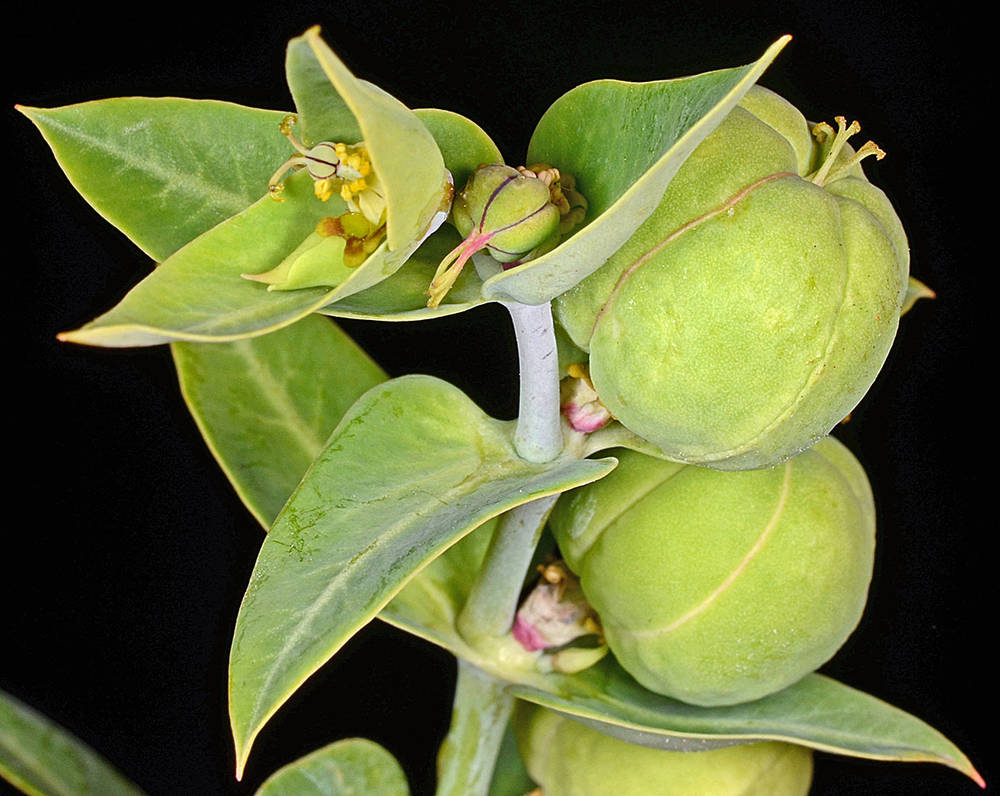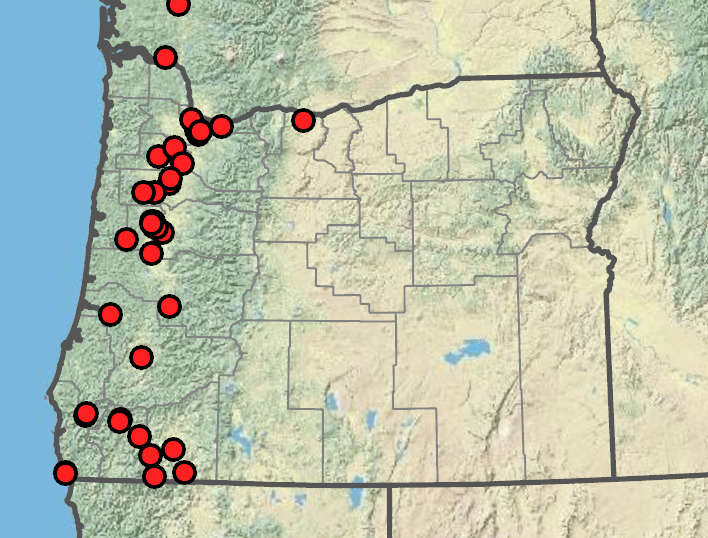Euphorbia lathyris
Chamaesyce serpillifolia
(synonym of Euphorbia serpillifolia)
caper spurge, gopher plant, mole plant
thyme-leaved spurge, thymeleaf sandmat
opposite, narrowly oblong to ovate or subcordate, 30–150 × 5–30 mm, bases clasping;
margins entire;
tips acute;
surfaces glabrous.
oblanceolate to oblong, 3–15 mm, occasionally with a central red spot;
margins entire to shallowly toothed;
tips rounded;
surfaces glabrous;
petioles 0.5–1.5 mm;
stipules slender and entire to linear and dissected, 1–1.5 mm.
involucres bell-shaped, 2.5–4 mm;
glands 2-horned; horns rounded and short.
involucres 0.5–1 mm, glabrous;
glands elliptic;
gland appendages white.
spherical, 5–15 mm.
spherical, 1–2 mm, glabrous.
round, 4–6 mm, wrinkled or with shallow reticulate markings.
ovoid, 0.9–1.3 mm; smooth to wrinkled.
Euphorbia lathyris
Chamaesyce serpillifolia
Disturbed areas. Flowering May–Jul. 0–500 m. Col, CR, Est, Sisk, WV. CA, ID, WA; scattered across North America; Asia, Europe. Exotic.
Euphorbia lathyris is our only member of the genus to have only opposite leaves. It is sometimes planted in gardens based on the unsubstantiated belief it may deter moles and gophers.
Usually dry places but sometimes in wet areas, roadsides, disturbed areas. Flowering Jun–Sep. 0–1900 m. BR, BW, Casc, Col, ECas, Lava, Owy, Sisk, WV. CA, ID, NV, WA; southern Canada, most of US except southeast and parts of northeast, Mexico. Native.
In California, some plants of this species have hairy stems, involucres, and fruits. These plants are accepted by some authorities as C. s. ssp. hirtula (ours, in turn, would be C. s. ssp. serpillifolia). Given the already small morphological differences between our species of Chamaesyce, we have chosen not to recognize the subspecies.
Stephen Meyers
Stephen Meyers
- Local floras:
BC,
CA,
OR,
WA
- Local Web sites:
CalFlora,
CalPhotos,
Flora NW,
PNW Herbaria
WildflowerSearch
iNaturalist (observations)
USDA Plants Database
- LBJ Wildflower Center
- SEINet
- Plants of the World Online
- Encyclopedia of Life
- Wikipedia
- Google Image Search
- Local floras:
CA,
OR,
WA
- Local Web sites:
CalFlora,
CalPhotos,
Flora NW,
PNW Herbaria
WildflowerSearch
iNaturalist (observations)
- LBJ Wildflower Center
- SEINet
- Plants of the World Online
- Encyclopedia of Life
- Wikipedia
- Google Image Search





